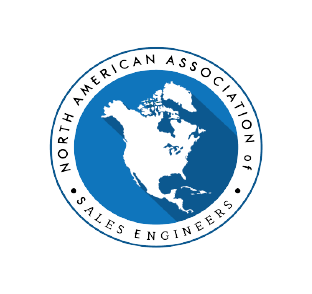North American Association of Sales Engineers
How to become a great Key Account SE?(Part 2)

(this is a continuation of the Part 1 Blog article, also on NAASE.)
(1) Research:
Get yourself into a position to be valuable to your customer. Get an expert. Soak in knowledge about their industry: competitive landscape, trends, economics. Are there industry certifications and learning paths you can take?
Analyze their quarterly reports to understand precisely where they earn money and where they spend it. What are strategic initiatives they announce to their shareholders?
Further reading on becoming an industry expert: 10 Steps to Become an Industry Expert in the Next 12 Months
(2) Build your Communication Cadence:
Build a strong network in all directions. As a core team member, you will work closely with your AEs. Set up a series of regular calls with your colleagues in the core team and the extended team.
(3) Set your Standards:
You will have to achieve goals through the work of others. Specialized SEs, partners, and further functional colleagues might support you going forward. Feel accountable for the quality of work they deliver.
Define the quality standards of presales customer interactions. Any demo, presentation, and prototype should be of consistently high quality. Others might be responsible for the delivery. You determine, govern and execute the preparation lifecycle: from planning, over dry-runs, to presentation and debriefing.
That usually means: take the standards from your broader organization and settle more quality on top.
Further reading on Leading by Example: MindTools – How to Lead a Team Honestly and Authentically
(3) Grow your own customer network:
Your role as a Key Account SE includes complementing your AE colleagues. Develop your relationships with customer contacts to build trust and exchange insights with the customer.
Identify and select with sales those contacts that you are going to cover. Build a stakeholder matrix. Whom are you going to build a rapport with, why, and how will you do that?
Further reading on Account Mapping: Lucidchart – How to build an account map
(4) Contribute your Strategy:
The account plan is your living document that:
- specifies your KAM’s multi-year vision for the account,
- includes strategies to realize the vision,
- and lists prioritized tactics to operationalize those strategies.
Develop yourself into a strong sparring partner for your sales counterparts. Help them identify opportunities from your technological point of view: where are they to today, how do they compare against industry benchmarks, and what can you help your customer grow?
Craft and contribute your technology strategy to the account plan. You might want to work with capability maps: what do they have today, what do they need short-/ mid-/ long-term, what can you bring them?
Further reading on Strategic Planning: Harvard Business Review – 6 Steps to Make Your Strategic Plan Really Strategic
(5) Evolve your Intrapreneurial Mindset:
It takes a village to serve a key account. Think of your company as a pool of skills, knowledge, and experience you can leverage to succeed in your key account.
Introduce the people to the account you need to get a job done in quality. Scout for internal talent, build a relationship with them. Seize the opportunity if it presents itself: get those talents in, coach them to be successful, and celebrate them.
Think of your account as your own company; operate it so that everyone loves working for it.

Further reading on Intrapreneuring: Blog of Gifford Pinchot III
Closing notes: is it worth it?
After everything you have read so far, you might wonder whether the job as Key Account SE is worth the effort. Can I really make a difference on this big ship account?
Yes, you can.
Gartner found that the likelihood to grow a Key Account is the highest when the KAM team embraces a strong focus on discovering, visualizing, and demonstrating value to the customer. That is your sweet spot.
Your AEs need you.
- To build trusted relationships only you can build with your consulting attitude.
- To identify opportunities only you can see with your technical expertise.
- To discover customer pain only you can dig out to with your presales methodologies.
- To make innovation tangible in a way only you can deliver with your demo skills.
Consider this your opportunity to take the next step in your #SEvolution.
Special thanks to the author of this article Steffen Mueller (The Founder of Pathfinder Consulting)


